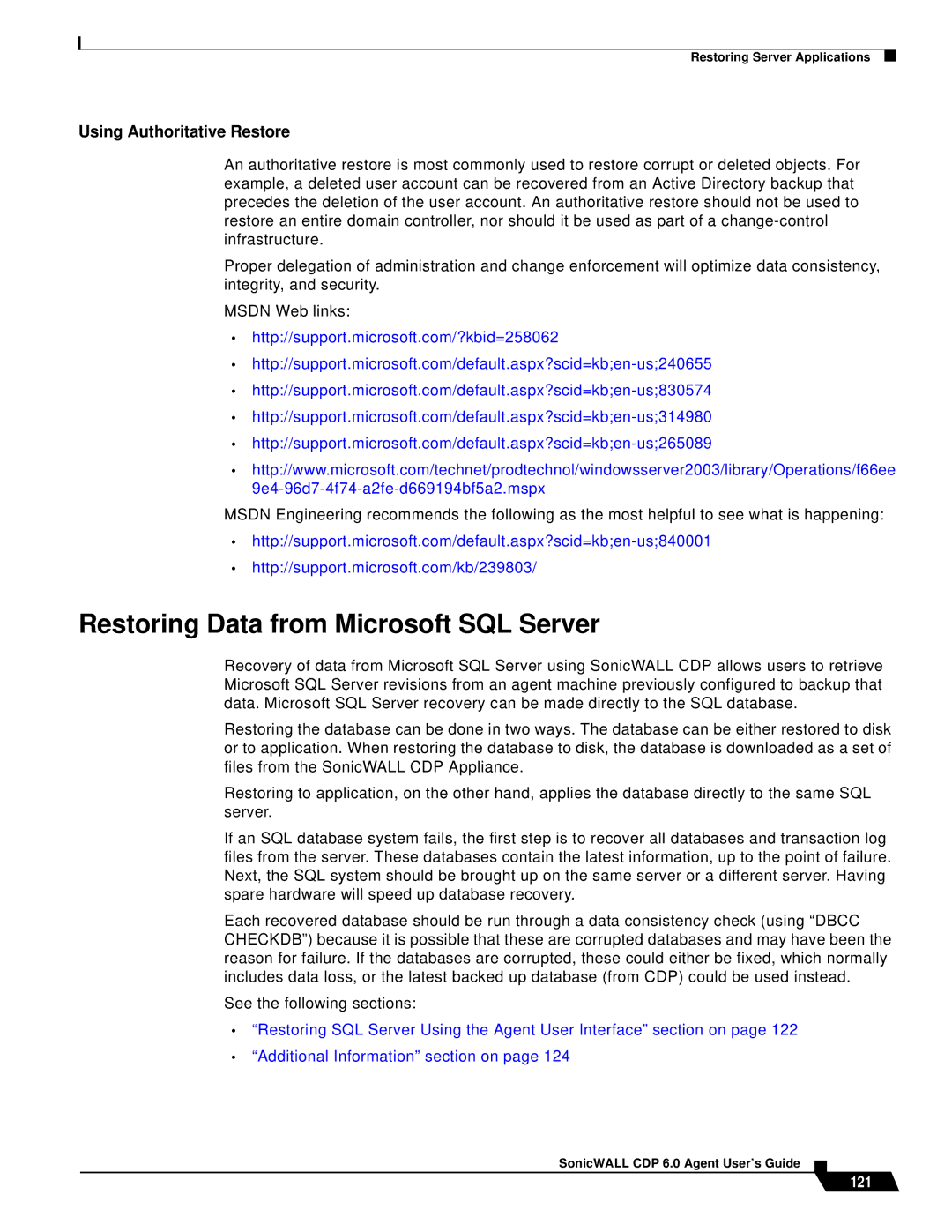
Restoring Server Applications
Using Authoritative Restore
An authoritative restore is most commonly used to restore corrupt or deleted objects. For example, a deleted user account can be recovered from an Active Directory backup that precedes the deletion of the user account. An authoritative restore should not be used to restore an entire domain controller, nor should it be used as part of a
Proper delegation of administration and change enforcement will optimize data consistency, integrity, and security.
MSDN Web links:
•http://support.microsoft.com/?kbid=258062
•
•
•
•
•http://www.microsoft.com/technet/prodtechnol/windowsserver2003/library/Operations/f66ee
MSDN Engineering recommends the following as the most helpful to see what is happening:
•
•http://support.microsoft.com/kb/239803/
Restoring Data from Microsoft SQL Server
Recovery of data from Microsoft SQL Server using SonicWALL CDP allows users to retrieve Microsoft SQL Server revisions from an agent machine previously configured to backup that data. Microsoft SQL Server recovery can be made directly to the SQL database.
Restoring the database can be done in two ways. The database can be either restored to disk or to application. When restoring the database to disk, the database is downloaded as a set of files from the SonicWALL CDP Appliance.
Restoring to application, on the other hand, applies the database directly to the same SQL server.
If an SQL database system fails, the first step is to recover all databases and transaction log files from the server. These databases contain the latest information, up to the point of failure. Next, the SQL system should be brought up on the same server or a different server. Having spare hardware will speed up database recovery.
Each recovered database should be run through a data consistency check (using “DBCC CHECKDB”) because it is possible that these are corrupted databases and may have been the reason for failure. If the databases are corrupted, these could either be fixed, which normally includes data loss, or the latest backed up database (from CDP) could be used instead.
See the following sections:
•“Restoring SQL Server Using the Agent User Interface” section on page 122
•“Additional Information” section on page 124
